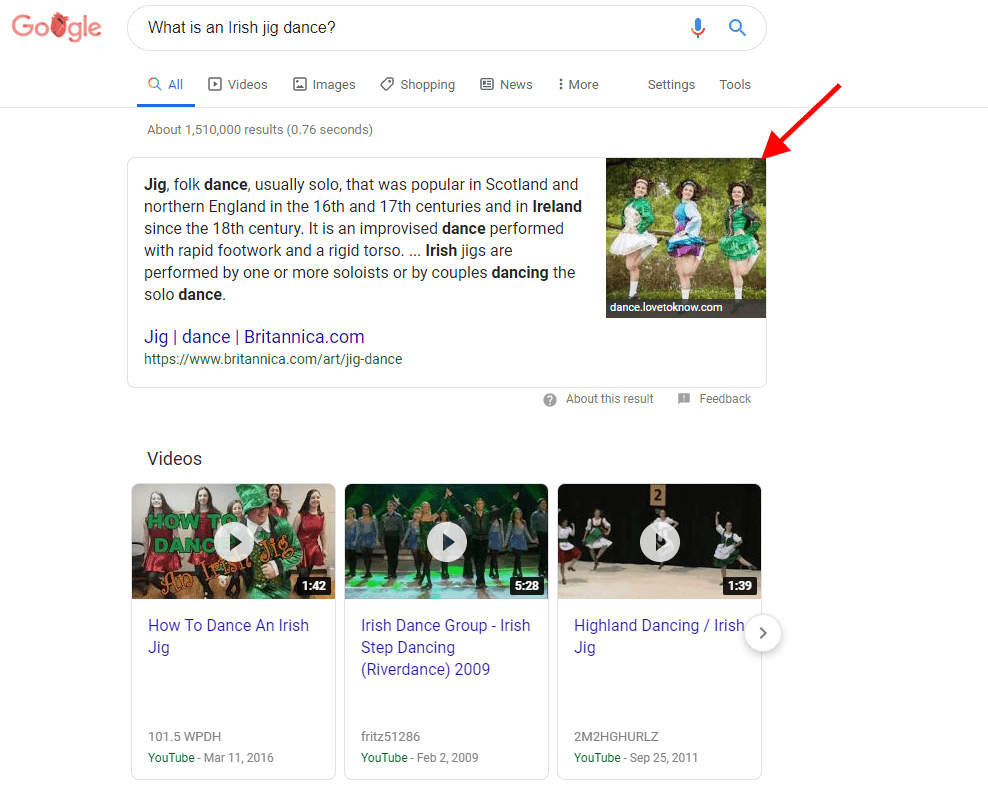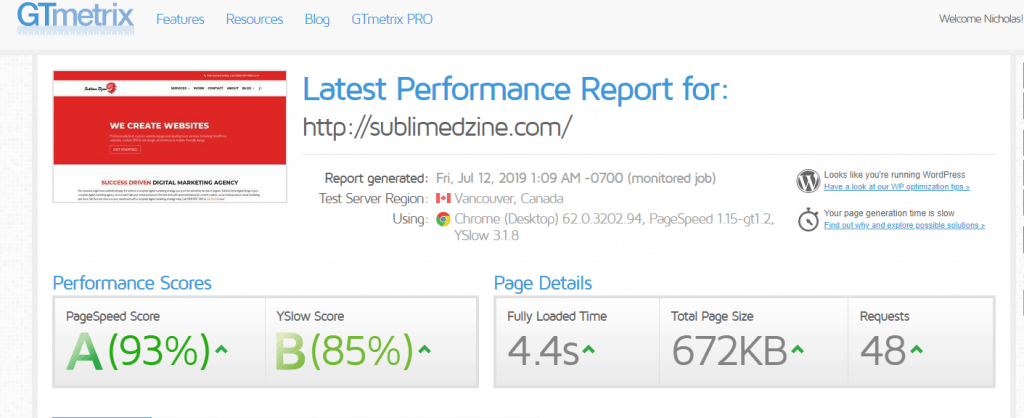7 Keys to a Successful SEO Strategy that gets Traffic
Optimization is defined as the process or method of making something as fully perfect, functional or effective as possible by Merriam Webster. There is no such thing as a ‘finished’ website, but the process of optimization in website design is to do everything you can now to be found but to also set your website up for future traffic. Successful SEO strategy comes in many parts, but follow these surefire ways to build and grow your website with SEO in mind and you’ll start winning those search engine results positions. Read on SEO warrior!
Utmost Guide to a Successful Website
Learn how you can get your digital marketing strategy working with a successful website design. Read on to get your SEO strategy straight and generate real traffic and converts leads.
What is SEO Strategy & Conversion Optimization?
The goal of search engine optimization or SEO strategy and conversion optimization strategy is to convert your website visitors into paying customers. Each part of your SEO strategy is focused on a different audience or way to find your website and content. let’s dig in a bit.
SEO Strategy
From the search engine results page or SERP, the goal in SEO is to get a click through to your website. This is accomplished by optimizing your on-page SEO data like keywords and phrases, page titles, and meta descriptions. These titles and descriptions should accurately describe the content on your website or a specific page. No trickery! Your visitors and Google will penalize you for it. Keep reading to learn how to do it right.
Conversion Optimization
Conversion optimization is focused on getting that website visitor to take your desired action. This can be placing a call, sending you an email, completing a form, or purchasing a product from your website. As mentioned above, if your website page content matches the meta description and title you’re in with the visitor already. Conversion optimization would call for the right calls to action and the right verbiage to help your visitor further down the sales funnel toward being a customer.
Moz.com’s ‘The Beginner’s Guide to SEO: Search Engine Optimization’ their ‘Mozlow’s hierarchy of SEO needs’ gives us seven key factors to focus on when implementing successful SEO in good website design. I’ll follow their lead and get a bit more descriptive down below.
What are the 7 Key Factors of SEO Strategy in Good Website Design?
Crawl Accessibility: Can search engines reach and index your website content?
Compelling Website Content: Is your content visually appealing and does it drive action?
Keyword Optimization: Are you saying the right things to attract searchers and search engines?
Great UX and UI: Do you offer a great user experience including fast load speed, ease of use, and a compelling website interface on any device?
Share-worthy Website Content: Do you try to earns links, citations, and engagement from your visitors and peers?
On-Page SEO: Is your technical SEO like the page title, URL, & meta description to in line with your SEO strategy?
Featured Snippet & Schema Markup: Are you formatting your SEO content to be featured at point zero on SERPS?
1.Crawl Accessibility
Search engines are the most important audience you need to consider when creating your SEO strategy and content. Before you ever get to search, Google and fellow search engines crawl your website to index and organize the information you present. This is also referred to as Indexing. Google offers a great explanation of How Google Search Works that is easy to follow.
If your website has already been indexed, any new content you create will be added eventually. But a successful SEO strategy, or successful anything really, doesn’t involve much sitting around and waiting. You can be proactive in creating that SEO strategy success by doing a few free and easy things.Â
 Submit your XML sitemaps to Google via Search Console. Sitemaps are literal text maps of the organized content on your website. It’s a definite part of successful SEO strategy, but not always the quickest.
Submit your XML sitemaps to Google via Search Console. Sitemaps are literal text maps of the organized content on your website. It’s a definite part of successful SEO strategy, but not always the quickest.- URL Inspection Tool. The URL Inspection Tool is part of the Search Console toolbox. Simply type or paste the URL you want Google to index and hit enter. You’ll see the following message verifying your page is ready for indexing. Click the Request Indexing button to have Google manually add your site to its index. You’ll see a message indicating your page was submitted.
- Submit URL Tool. This doesn’t actually exist anymore. No more lazy routes to a successful SEO strategy. You need to put in the time if you want your visitors to find you.
- Use Google My Business. Post your content on your Google My Business profile. Add all the proper images, title, description, and link the button back to your SEO ready webpage.Â
- Host your website on Google. Can’t hurt to give Google 100% access to all of your website and content if you want them to serve it, can it? Well, I wouldn’t go about saying that, but less barriers to your website and content mean quicker and more frequent touches from Googles crawlers. I don’t currently host anythign on Google Sites by the way, a full web host offers a plethora of additional options.
2.Compelling Website Content
I’ve built some amazing websites with great technical SEO. But there were a few that lacked the substance or content to qualify as a great or successful website. Without the right information in the right place, your website visitors are going to bounce out and do it quickly.
FEATURED: Check out our Utmost Guide to a Successful Website for an indepth review of a what a good website takes. Here’s a quick link to the importance of visual appeal in your website design.
Provide your website visitors with compelling and visuallly appealing content. This will go to complement your search engine optimized text content. Make sure to include alt tags, descriptions, and captions when applicable. Videos are the best selling content on the internet. Include a video recap of your webpage or how-to for a product. Answer your visitors questions and give them more engagement options.
3.Keyword and Phrase Optimization
Keywords have been pronounced ‘dead’ for some time, but that’s not entirely true. Singular keywords are old news, LSI or latent semantic indexed keywords are the new new. LSI keywords are other words and, more importantly, phrases that are related to your content of choice.
Think about finding a restaurant at midnight in a strange town. You’re searching for “restaurants near me” or “restaurants open now”, not so much “Mexican food”. If you’re a Mexican food restaurant, you definitely want to include that phrase, but make sure to cater to folks whos priorities in searching for you may differ.
Head over to LSIGraph’s website and try their keyword research tools. Great info and worth looking into the paid version.
4.Great User Experience
You need to have your readers at the forefront of consideration when presenting your optimized website. Providing your users with a great experience on your website includes several factors that also make Google and fellow search engines happy.
A great user experience consists of fast load times, ease of use, consistent function and the compelling content I mentioned already. If your website doesn’t load in a timely manner and present the proper information, your visitor will leave and not come back. This first impression will also be how your potential customer views your business. Read our Guide to a Successful Website to read more about the importance of visual appeal.
Visit GTMetrix to see how you rate for SEO and user experience. Their free tool provides a ton of insight on much of your SEO strategy as it pertains to User Experience.
6.On Page SEO & Meta
The on-page SEO data is a major part of your SEO strategy. This information includes your metadata like the page title, meta description, and the page URL or slug. Successful SEO strategy takes every aspect of your website and page content. A great page title should be around 55 characters in length and an effective meta description will have about 160 characters. As an example, if your focus is “emergency vet services”, your page title, meta description, and page URL should look something like the following:
URL: https://123notarealvet.com/emergency-vet-services
Page Title: Emergency Vet Services at 123 Not a Real Vet in YourTown (56 characters)
Meta Description: Get emergency vet services now in YourTown, AZ now! We are a 24/7 full-service animal hospital. Come directly to our hospital for immediate care for your pet. (158 characters)
I used the word ‘vet’ in this example because in the moments I was in need of emergency pet care, there was no way I was trying to spell ‘veterinarian’. Know your audience and plan your SEO strategy accordingly with the right keyword research.
7.Featured Snippets and Schema Markup
Schema Markup and Featured Snippets are advanced ways for you to help the search engines understand your content. These options focus on the format of the data more than anything.
Schema
With the right Schema markup, you can identify anything from products to events. According to Moz.com Schema is most often used to provide more details on the following:
- Creative Work
- Events
- Organizations
- Persons
- Places
- Products
- Check out the full Schema hierarchy here.
Featured Snippets

Example of a Featured Snippet in Google SERPs
Featured snippets are a great way to show first on search results pages as well as establishing authority on a specific subject matter. They answer the direct questions of the searcher, not just display relevant information. A featured snippet is the list of key features a successful SEO strategy includes for example or the answer to your question about the latest features of your new phone update.
Over at Neilpatel.com they refer to the featured snippet as ‘position zero’ as it lives above the first ad or organic results. These snippets usually take up a lot of space too. Here’s an example of what a featured snippet looks like when you search for ‘what is an Irish jig dance?‘
Closing
Creating a successful SEO strategy comes with a need for real research and planning in order to be effective and accomplish your goals. An SEO strategy that takes into account the many technical aspects of website design and SEO will see immediate success and a lift in search results page rantings. But developing an SEO strategy that includes compelling and well-organized content will win you consistent and profitable traffic that converts to leads. Combine a good technical SEO standing with the right content and you’ll be found every time and be first in line to answer your customers’ questions.
At Sublime Dzine we bring the technical aspect of SEO strategy, the creatives brain for compelling content creation, and website designs that grow businesses. Contact us today to get your free review of your SEO and website to get started on attracting new and greater traffic. And if you have something to add or a question, please please please comment below.
Build a Successful SEO Strategy Today
Get your digital marketing strategy working for your business with a successful website design. Get your on top of your SEO strategy today and generate real traffic that converts and grows your business.


